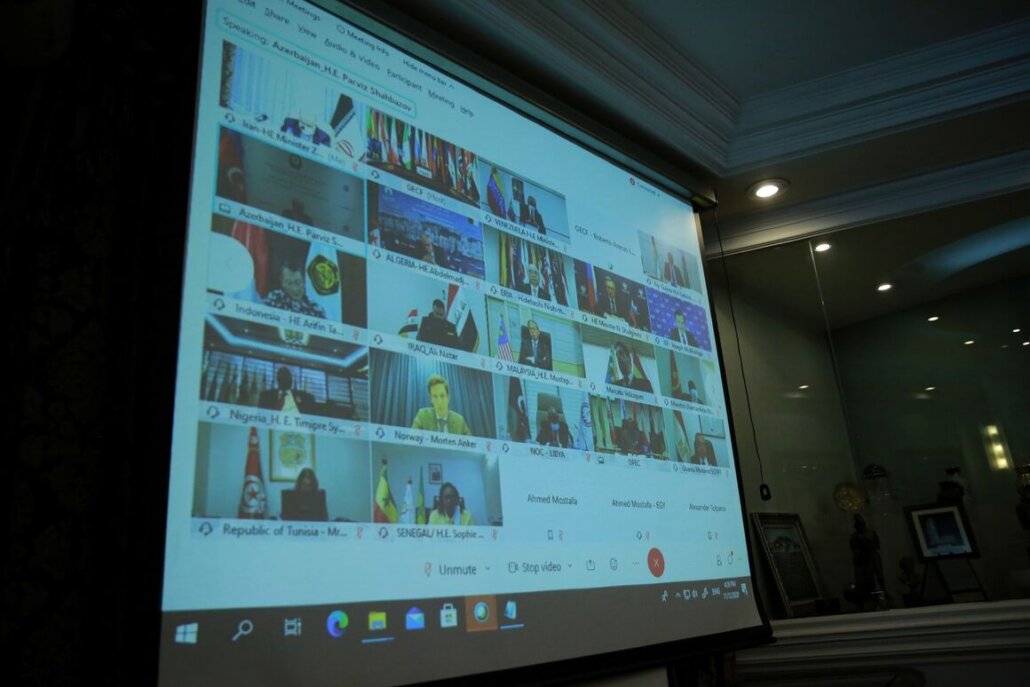The Gas Exporting Countries Forum (GECF) Global Gas Outlook 2050 was launched today in Doha, the State of Qatar. Quantified through the use of the unique and highly granular GECF Global Gas Model, the 4th edition of the Outlook is based on proprietary assessments of the evolution of energy and gas market fundamentals through to 2050.
The GECF Global Gas Outlook is a unique worldwide energy outlook focusing solely on natural gas, which aims to be a global reference for insights into gas markets. The publication represents an impartial view on gas market evolution by highlighting the most likely developments in the medium- and long-term.
In order to have a broader mapping of the uncertainties shaping the development of gas markets multiple scenarios are needed. To this end, the Forum addresses future uncertainties and their possible impact with alternative scenarios through its annual publication of the Global Gas Outlook.
Addressing the unveiling ceremony, H.E. Mr. Saad Sherida Al-Kaabi, the Minister of State for Energy Affairs, and President and CEO of Qatar Petroleum said, “While fossil fuels will continue to dominate the global energy mix, natural gas will be the only form of hydrocarbons to increase its share during the next 30 years. Today, the share of natural gas in the global energy mix stands at about 22%. By 2050, this is expected to rise to 27%, according to the outlook, which is being launched today.”
Also addressing to the audience, composed of the Forum Member Countries’ representatives, members of the diplomatic corps, experts and academia, H.E. Dr. Yury Sentyurin, Secretary General of the GECF, highlighted the importance of natural gas and its great potential as energy source for sustainable development due to the efficiency, availability, and eco-friendly nature of the resource.
In addition to these environmentally sound features of natural gas industry ecosystem, H.E. Secretary General informed that the Forum strives to prove itself as an environmental learning and knowledge sharing hub, in particular by implementing the state-of-art practices. For instance, it comes as a positive development, that the current edition of the organization’s landmark forecast was produced at the highest environmental standards – using recycled paper and vegetable inks – for the first time in the GECF history.
To address the Global Gas Outlook key findings and advocate vital importance of natural gas in ensuring global energy security and more sustainable and resilient energy systems, the event continued with a panel discussion, where the GECF analysts elaborated on the publication’s six main chapters.
Chapters I and II introduce key global gas demand assumptions, including economic, energy price and policy assumptions, as well as environmental policy development. Chapter III highlights energy and gas demand trends, followed by supply assumptions in Chapter IV, which include global gas resources, upstream and unconventional production. Chapter V is dedicated to global gas trade and investment outcomes resulting from the equilibrium between supply and demand. It takes into consideration gas market constraints, in terms of supply infrastructure, international supply contracts and gas supply policies (e.g. the satisfaction of domestic gas demand as a priority for some countries). The final chapter features two alternative scenarios devised by the GECF Secretariat: the Carbon Mitigation Scenario and the Technology Advancement Scenario.
It was specifically stressed, that the results are quantified through the use of the Global Gas Model, which is a unique energy model developed in-house at the GECF Secretariat, and which includes different sub- models with each one focused on one segment of the gas value chain (production, pipelines, LNG, shipping, regasification, contracts and demand).
The Model endogenously calculates gas demand curves and gas production profiles country by country based on corresponding assumptions and inputs. All of the sub-models have been calibrated and based on 2018 as the last available year of historical data.
Read more at:




